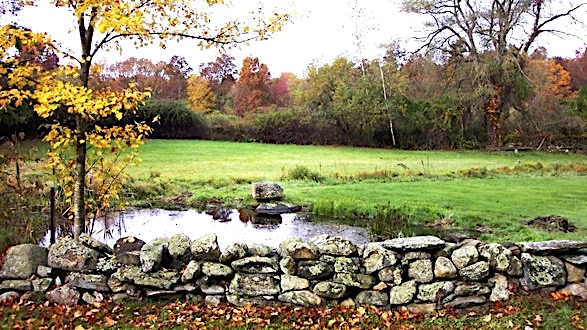Imminently, the journal Historical Archaeology will be publishing my mini-monograph “Taxonomy and Nomenclature of the Stone Domain in New England” as an oversized journal article in what they describe as “the leading journal in the study of the archaeology of the modern era,” and “the scholarly journal of the “Society for Historical Archaeology.” Being a geologist, I have no basis for quibbling with those statements. And, as an outsider to the field, I especially pleased that they will publish my “new tool” after careful peer review of a manuscript submitted in March 2022, accepted in October 2022, and copy-edited last winter. With permission, I share its abstract.
The Euro-settlement of rural New England created an agro-ecosystem of fenced fields and pastures linked to human settlements and hydro-powered village industry. The most salient archaeological result was the stone domain, a massive, sprawling constellation of stone features surviving as mainly undocumented ruins within reforested, closed-canopy woodlands. We present a rigorous taxonomy for this stone domain based on objective field criteria that is rendered user-friendly by incorporating vernacular typologies and functional interpretations. The domain’s most salient class of features are stone walls, here defined as objects meeting five inclusive criteria: material, granularity, elongation, continuity, and height. We also offer a suggested nomenclature and descriptive protocol for archaeological field documentation of wall stones (size, shape, arrangement, lithology) and wall structures (courses, lines, tiers, segments, contacts, terminations, and junctions). Our methodological tools complement recent computationally intensive mapping tools of LiDAR, drone-imaging, and machine learning.
Note that I am not publishing any archaeological interpretations. Rather, I’m providing what one reviewer deemed similar to a “Munsell Soil Color Book,” an objective tool for naming and classifying that will help steer the study of relict stone walls toward science, in this case historical archaeology, which, for the Anthropocene, is also surface-process geology. Though there was some back and forth during revision, my assertion that walls are artifacts, rather than features, survived the chopping block. My hope is that better science will lead to better archaeology, which will lead to better environmental management. In fact, the parallels between wetland conservation and dryland (stone walls) conservation are intriguing.
This project has been a long time coming. In 2005, a preliminary taxonomy was published in my book Exploring Stone Walls, which the publisher Bloomsbury let go out of print. In 2009, I put a revised version up on this website. Since then, I’ve been tweaking the taxonomy and naming protocols while consulting with colleagues that included three state archaeologists. My plan was to hold off publishing in a technical journal until I felt like I had things right. That feeling never came, so I decided to take a deep breath and move forward, warts and all.
With a classification system in place, I then moved on to stone wall management and conservation, putting together a draft set of considerations and suggestions for any organizations interested in writing more science-based regulations for protecting this precious resource.
